EXI Common Use Cases
Overview
Moveworks Employee Experience Insights (EXI) gives IT leaders and teams an actionable to-do list, providing visibility into areas that need attention and the ability to prioritize the projects that will drive maximum impact.
Below, you’ll find a few common examples of how to identify and action specific signals you may see in your data.
Example 1: Increase Self Service & Moveworks Copilot Resolution
Goal: Use EXI to surface opportunities to reduce incoming ticket volume for low tech issues that could be resolved without IT support.
Step 1: Analyze
- Use the Employee Issues dashboard to drill into key categories like troubleshoot and manage.
- Look for topics with high issue volume and low TTR. This can sometimes be a signal for issues that are easily resolved, and have the potential to be resolved by the employee or the Copilot if the right knowledge or automation is in place (see screenshot below).
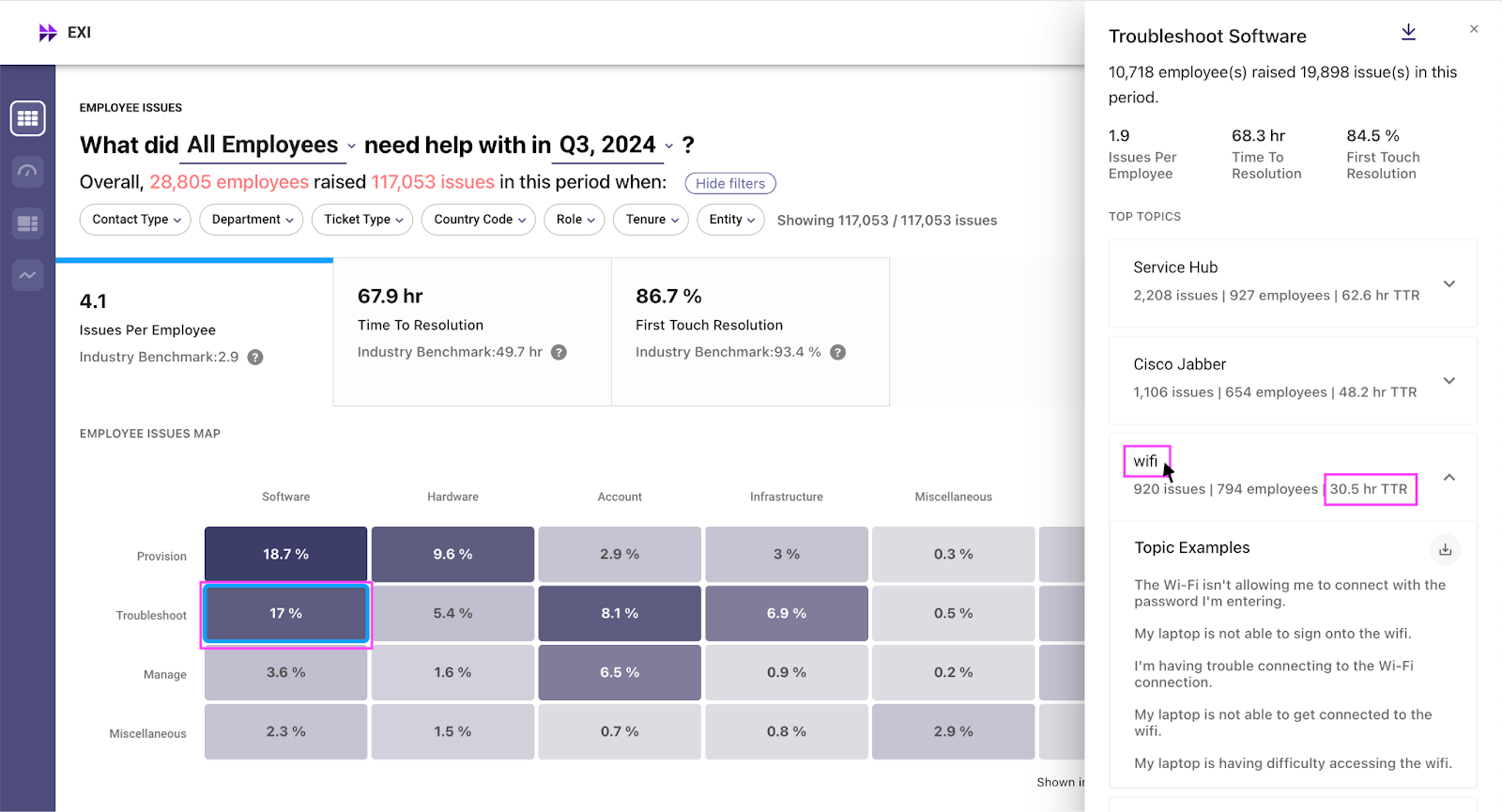
- Select the topic name to continue drilling in via the Apps & Services dashboard.
- Filter for the lowest TTR issues and analyze a subset of tickets to better understand the resolution steps (see screenshot below).
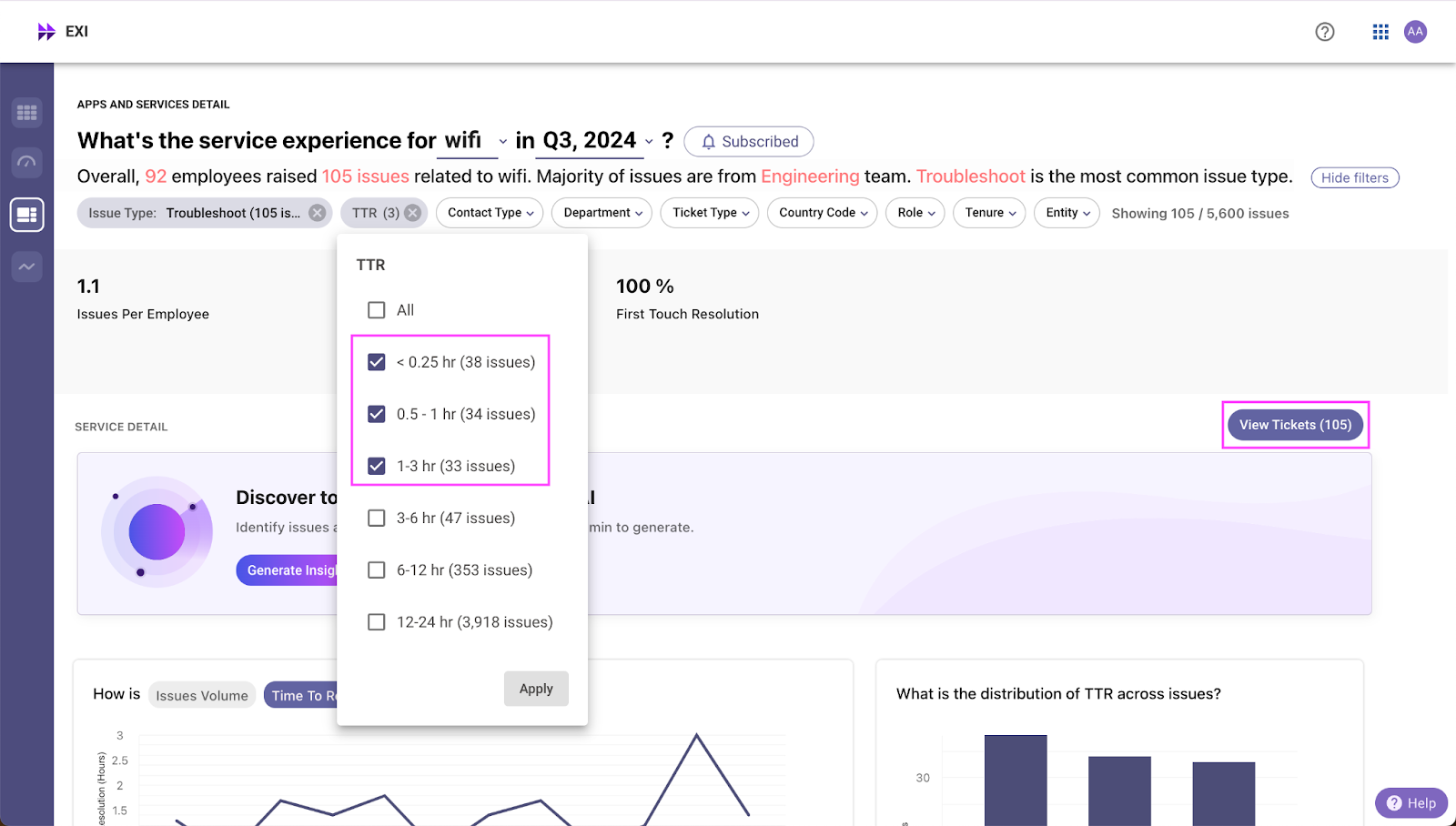
Step 2: Solve
After analyzing your tickets and resolution steps, ask yourself:
Are these issues something end users could complete on their own with the steps provided? Or completed by the Moveworks Copilot by configuring a new Creator Studio automation?
For example: See how to set up an automatic MFA reset in Creator Studio or search for additional configuration options in the Creator Studio plugin library.
- Create necessary knowledge article/s
- Create your new automation
- Test Moveworks Copilot knowledge and automations
Pro tip: After you take action, advertise the new capability to employees with an Employee Comms message. Learn more about Employee Comms
Step 3: Report
What’s the Impact?
Improved IT Bandwidth: Track & report on ticket volume for this issue monthly or quarterly with the Impact Dashboard. Reducing the volume of routine tickets allows you to allocate resources more strategically.
User Satisfaction: Use NPS/CSAT surveys to gauge satisfaction across customers. Immediate resolution of issues improves user satisfaction and IT department perception.
Reduced Downtime: Calculate time saved with the reduced volume of tickets. Waiting for issues to be resolved impacts employee productivity. By enabling instant resolution through automation or self-help documentation, employees can immediately regain access to essential systems and tools necessary for their roles.
Step 4: Repeat!
Now that you know what signals to look for, repeat these steps for all top topics in key categories such as troubleshoot and manage. Incremental changes such as improving your knowledge base and creating new automations can have a big impact on your organization.
Example 2: Reduce Provisioning Time
Goal: Reduce the time it takes to grant access to important applications and hardware.
Step 1: Analyze
- Use the Employee Issues dashboard to drill into the provisioning categories.
- When looking at topics with low TTR, this can sometimes be a signal that the provisioning process is simple and has potential to be auto-provisioned.
- When looking at topics with high TTR, this can sometimes be a signal that the provisioning process is more complex and your team could benefit from additional internal documentation, agent training, approvals review, or a request form (see screenshot below).
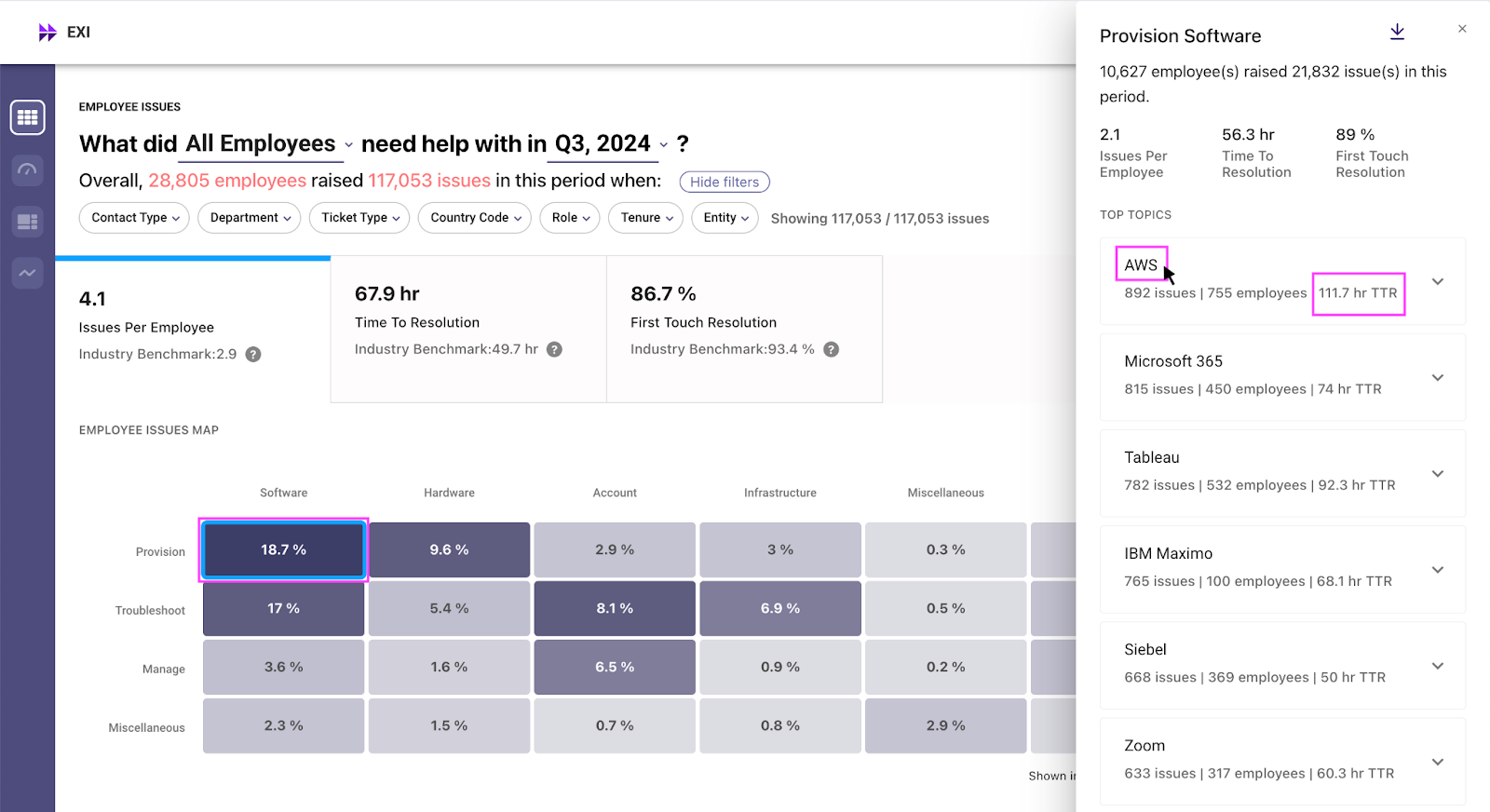
- Select the topic name to continue drilling in via the Apps & Services dashboard.
- Use the TTR distribution chart to view the issues taking the most time to resolve. Analyze the tickets to better understand the bottlenecks for provisioning this system (see screenshot below).
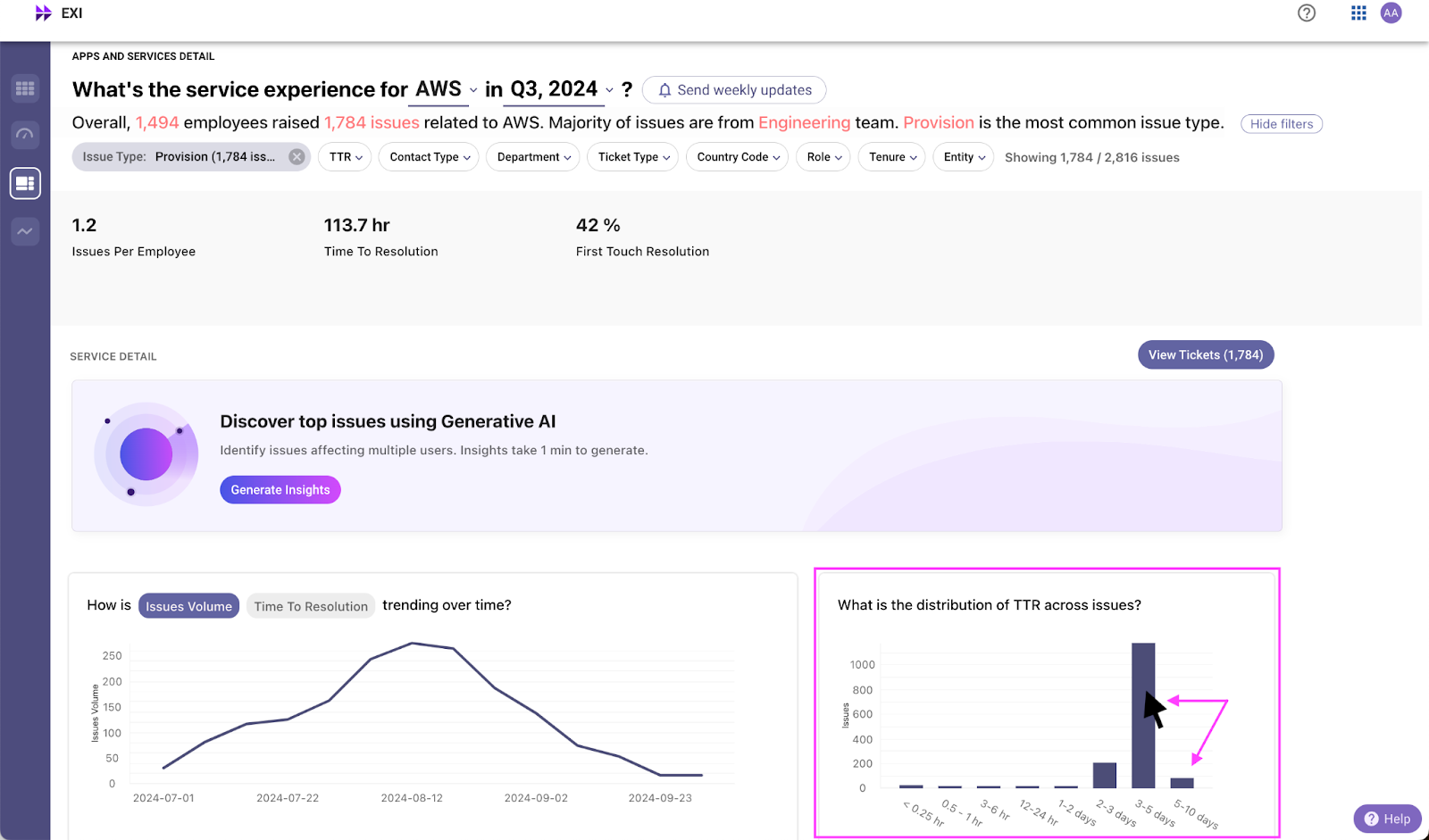
Step 2: Solve
After analyzing your tickets and existing processes, ask yourself where the process can be improved.
Is there a form that can be configured to ensure agents have all the information required at the first request? Is there an approval process holding up access that could be adjusted? Is critical information missing from internal documents? Or do agents need training to improve their workflow? Is it possible to auto-provision this application?
Take action:
- Create form
- Contact approvers / simplify approval process with Moveworks
- Create/update internal process docs
- Schedule an agent training session
- Create and test automation for provisioning in copilot
Step 3: Report
What’s the Impact?
Improved IT Bandwidth: Reducing the time spent provisioning systems allows you to allocate resources more strategically.
User Satisfaction: Quick resolution of account provisioning improves user satisfaction and IT department perception.
User Productivity: Quickly gaining access to required systems allows employees to be more productive in their role.
Step 4: Repeat!
Repeat these steps for all top topics in your provisioning categories. Improving your provisioning processes can have a big impact on your organization over time.
Example 3: Identify Troubleshooting Guide Opportunities
Goal: Use EXI to identify opportunities to create new knowledge for the topics the service desk is commonly troubleshooting.
Step 1: Analyze
- Use the Apps & Services dashboard to view All Issues in the Troubleshooting category by using the Issue Type filter.
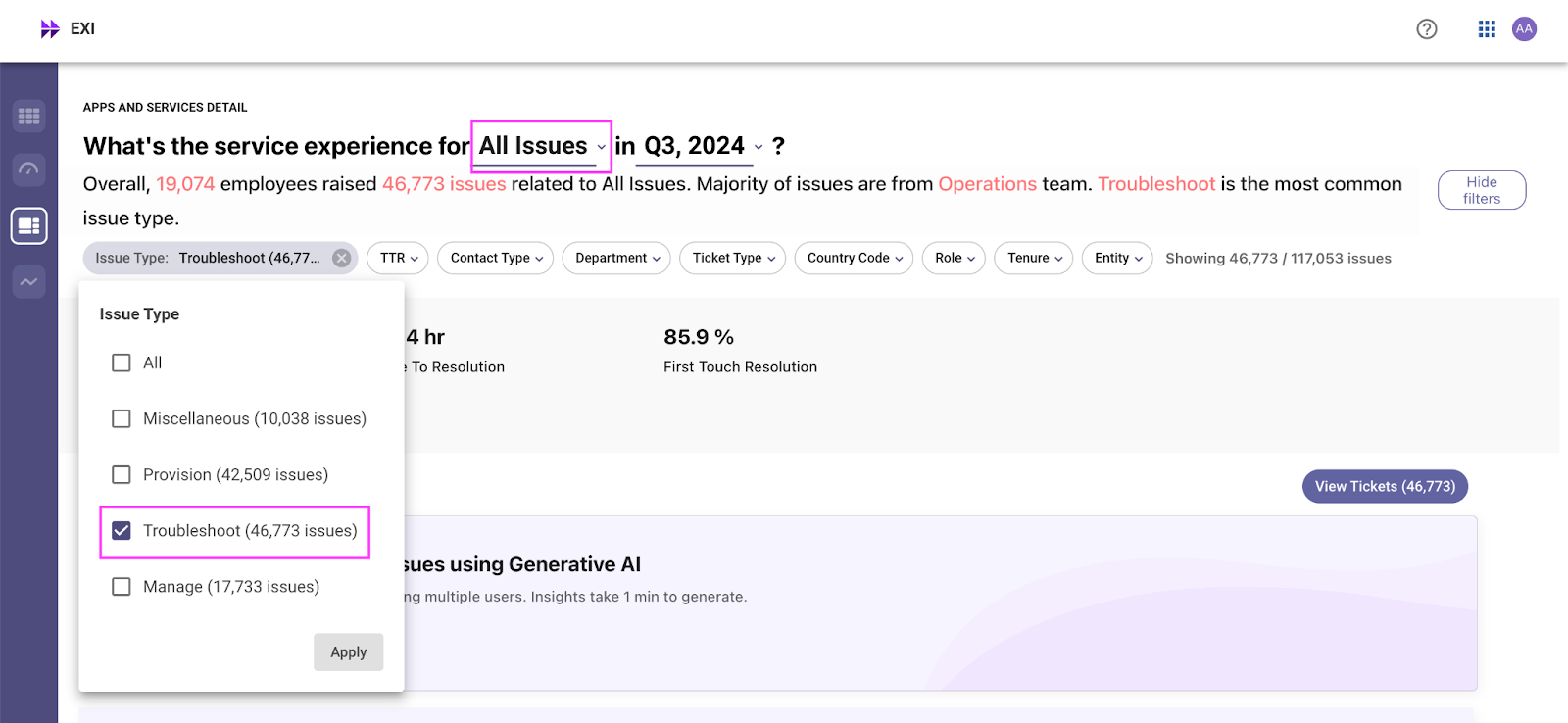
- Then select the Generate Insights button to see an AI generated list of the top troubleshooting issues for that timeframe. Tip: use larger time periods if needed.
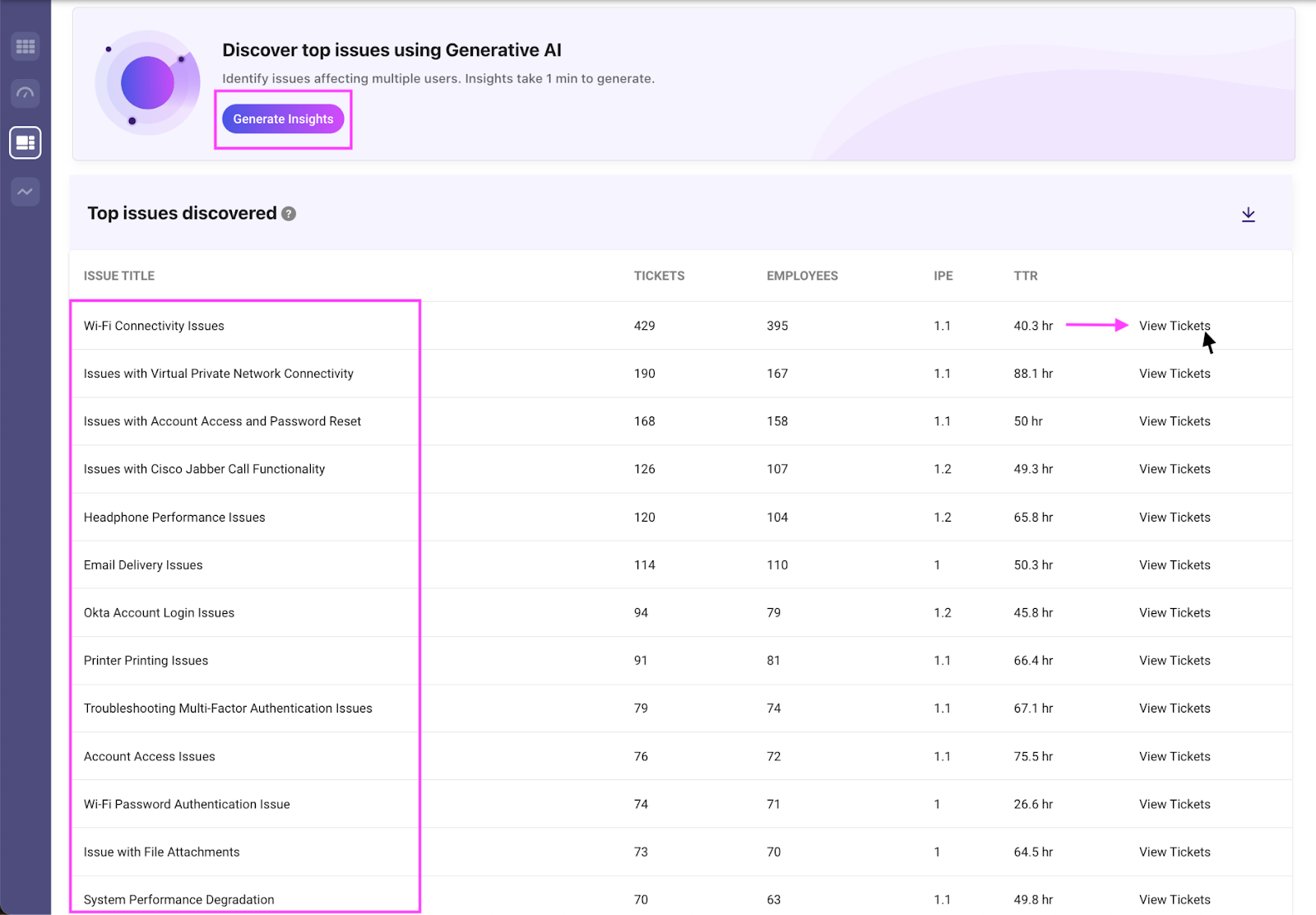
- This list can be used as a starting point for potential new troubleshooting guides for your knowledge base.
- View and analyze the tickets in each category to understand the steps used to resolve the issues that should be included in any new troubleshooting guides.
Step 2: Solve
After analyzing your tickets and resolution steps, begin creating troubleshooting guides for any topics with knowledge gaps.
Pro tip: If you have access to Moveworks Knowledge Studio, save time by simply prompting Knowledge Studio to create a troubleshooting guide for the desired topic from the list. Knowledge Studio will extract and combine relevant ticket notes and draft a troubleshooting guide for you. Learn more
Step 3: Report
What’s the Impact?
Improved Knowledge Base: Equipping both customers and agents with comprehensive, easy-to-access knowledge resources to expedite resolution.
Reduced Ticket Volume: As employees find answers in the KB, fewer tickets are generated for common issues.
Example 4: Identify and Address Applications that need Attention
Goal: Identify the apps and services that contributed to an increased volume and time spent on resolutions for your service desk. Then use EXI data to pinpoint issues and take action.
Step 1: Analyze
- Use the Impact dashboard to view All Issues in the last month or quarter.
- Select drivers of change by Apps & Services.

- Select the names of top issues to continue drilling in via the Apps & Services dashboard.
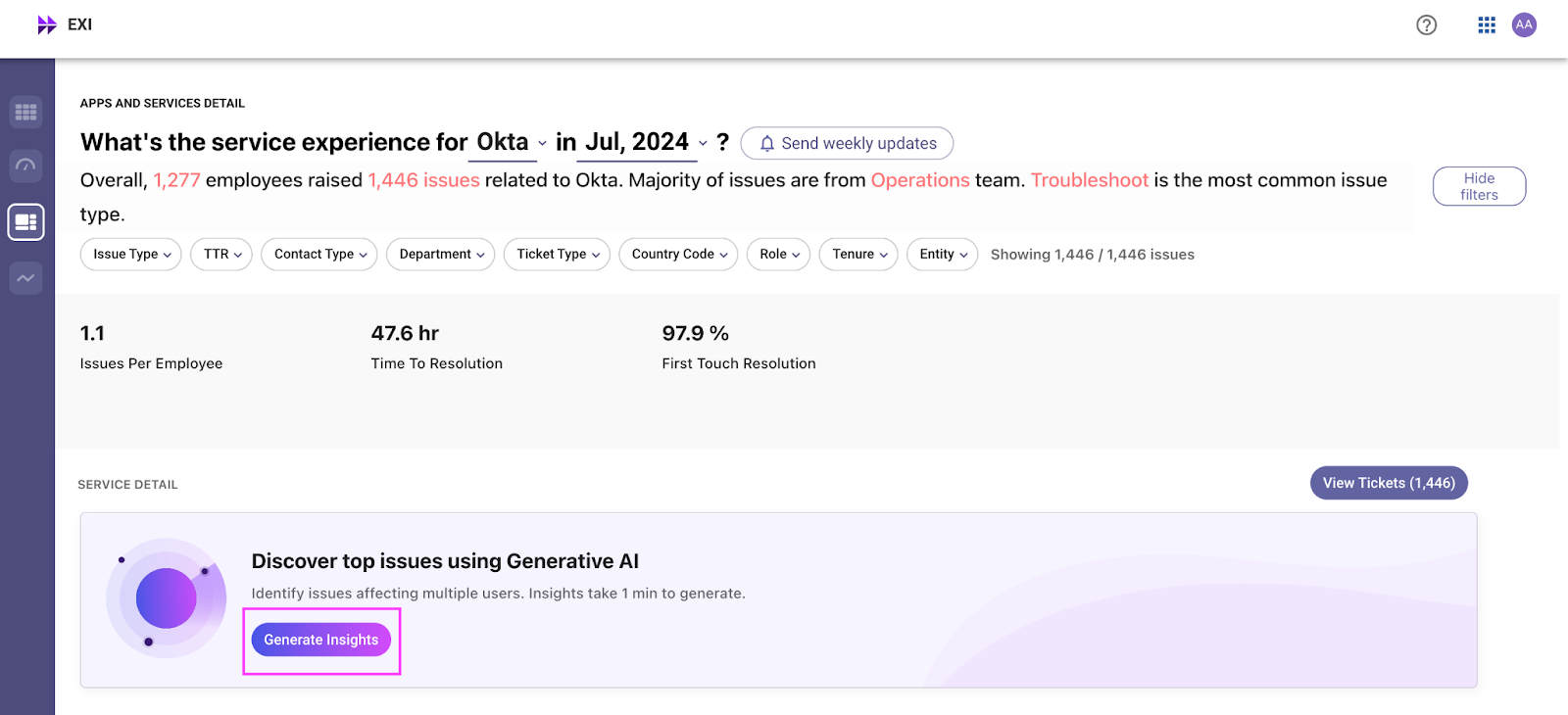
- Select the Generate Insights button to see an AI generated list of the top issues for this application in the given timeframe.
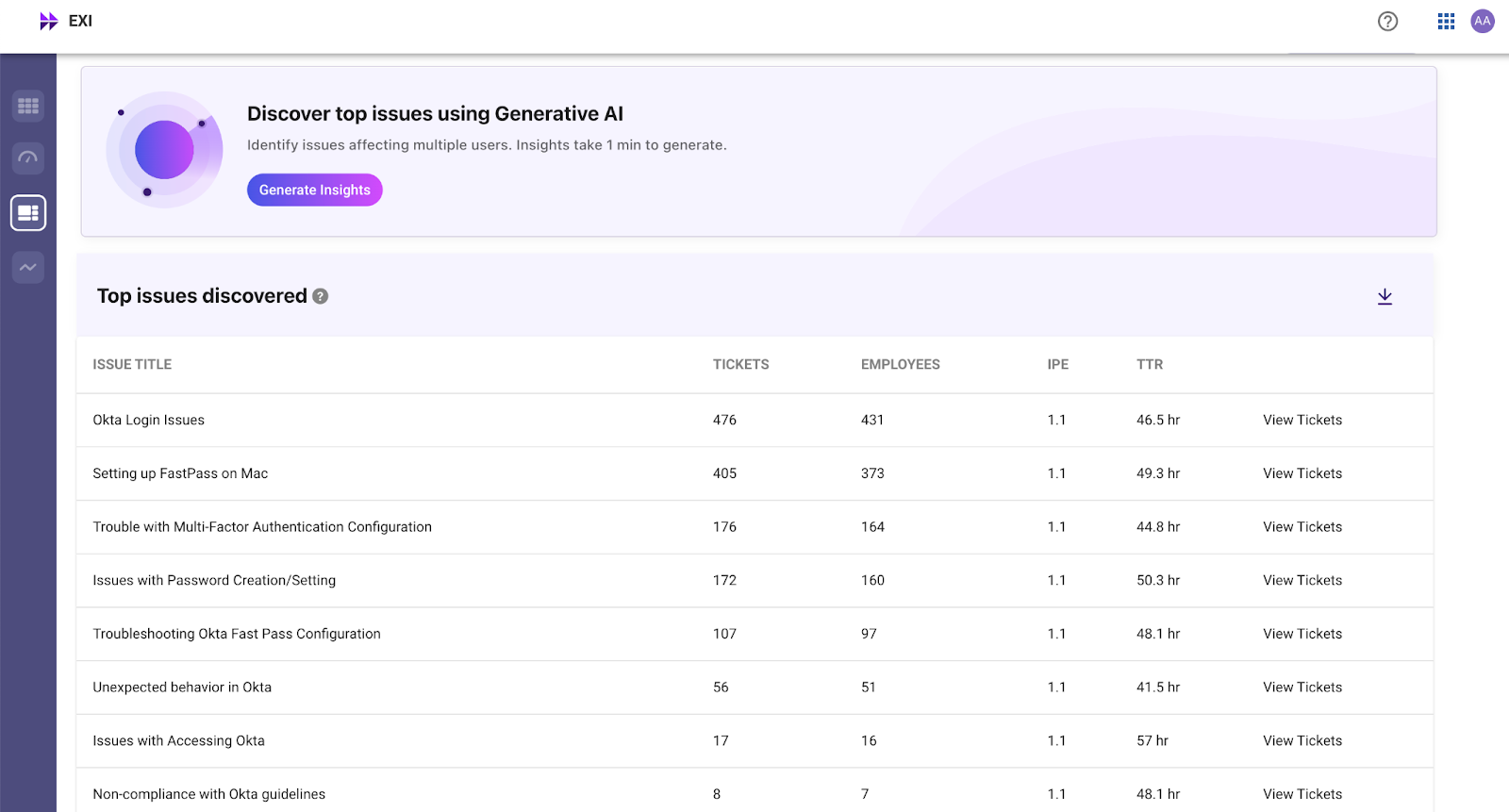
- Investigate top issues to uncover opportunities and inform agents to reduce volume or TTR over the next month or quarter.
Pro tip: Stay up to date on current issues and changes for any specific application in your organization by selecting the “Send Weekly Updates” button from the Apps & Services dashboard . Learn more
Step 2: Solve
After determining the root cause that contributed to increased ticket volume and resolution time, select the resolution steps that best fit the problem at hand.
- Create additional KB articles
- Add or update internal documentation or training for agents
- Work directly with vendors on key issues slowing down your service desk
- Review and update the onboarding process for new hires - use Employee Comms to showcase Moveworks Copilot tips, add/update training, and auto-provision software
- Keep agents updated on applications and services requiring increased attention
Step 3: Report
What’s the Impact?
Improved Service Desk Performance: Understanding the systems contributing to increased work helps set expectations and ensure agents are equipped with necessary knowledge heading into the next cycle.
Inform key stakeholders:
- IT Department Leadership
Such insights can help make informed decisions on resource allocation, strategy adjustments, and to justify IT investments.
- Service Desk/Support Team Management
Managers utilize the insights to optimize team workflows, adjust training programs, and fine-tune their approach to ticket management and user communication.
- Executive Team
High-level insights on IT service efficiency, cost savings, and impacts on overall organizational productivity are critical for informing broader business strategies and decisions.
Updated about 1 month ago